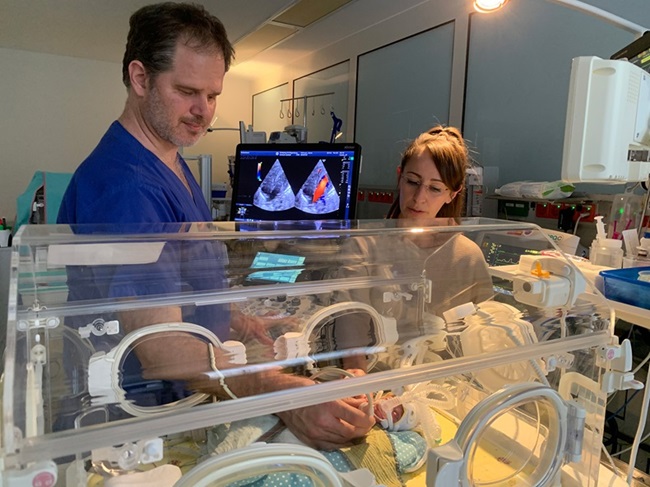Artificial Intelligence Detects Heart Defects in Newborns from Ultrasound Images
Posted on 14 Mar 2024
Pulmonary hypertension is a condition where the arteries going to an infant’s lungs don't open wide enough or close back up soon after birth. This makes it hard for blood to get to the lungs and for the infant to get enough oxygen. It's really important to find and treat this problem quickly to help the infant get better. However, figuring out if an infant has pulmonary hypertension is tough and usually only very skilled heart doctors can do it by looking at heart ultrasounds. Now, researchers have developed an artificial intelligence (AI) model that can help diagnose the disease in newborns.
Researchers at ETH Zurich (Zurich, Switzerland) developed the AI model by training their algorithm on videos from heart ultrasound recordings of 192 newborns. These videos showed the heart beating from different sides and included the heart doctors' views on whether the baby had pulmonary hypertension and the severity of the condition. Then, they tested the AI model using a second dataset of ultrasound images from 78 newborn infants. The AI model correctly diagnosed whether the baby had pulmonary hypertension in about 80 to 90% of the cases and was also correct about the severity in about 65 to 85% of cases.

The AI model also highlights the parts of the ultrasound image on which its categorization is based, allowing doctors to know exactly which areas or characteristics of the heart and its blood vessels it considers suspicious. This AI model could be potentially applied to other organs and diseases, such as for diagnosing heart septal defects or valvular heart disease. It could also find application in regions where specialists are unavailable: the model could examine standardized ultrasound images taken by a healthcare professional and provide a preliminary risk assessment along with an indication of whether a specialist should be consulted. Medical facilities without access to highly qualified specialists could use the AI model to reduce their workload and achieve a better diagnosis.
“The key to using a machine-learning model in a medical context is not just the prediction accuracy, but also whether humans are able to understand the criteria the model uses to make decisions,” said Julia Vogt from ETH Zurich who led the research group. “AI has the potential to make significant improvements to healthcare. The crucial issue for us is that the final decision should always be made by a human, by a doctor. AI should simply be providing support to ensure that the maximum number of people can receive the best possible medical care.”
Related Links:
ETH Zurich














